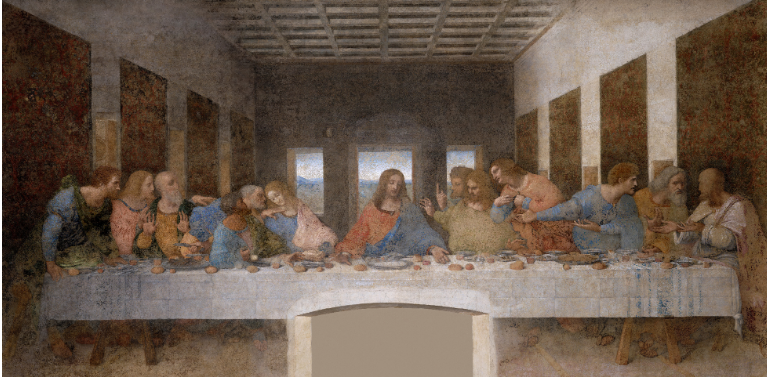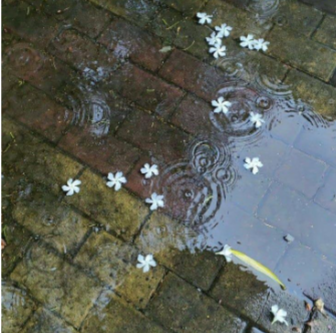Dark Femininity in Literature & Film by Alexandra Rae
- Apr 2, 2023
- 4 min read
You’ve seen her before: the mysterious, often vindictive woman whose alluring features appeal to both the men that want her and the women who want to be like her. She’s a witch who lives in the forest, secluded from the rest of society; she’s a vampiric creature of the night who lures her lovers to their death; she’s a heartbroken highschooler looking to exact revenge on the boy who broke her heart; she’s dark-haired and powerful and made up of the stuff from nightmares – or, for some people, your wildest dreams. Whoever – or whatever – she is, she’s played an integral part in pop culture throughout the last few decades, becoming a staple in the portrayal of strong female characters in literature and film. To understand the many facets of her character, it’s important to break down her origins and trace her appearances throughout the years.

“Saturn Woman” from andyokay.com
The term “dark feminine” is often used to describe alternate aspects of the typical portrayal of femininity instilled within art and the media as a whole. Instead of being sweet, agreeable, delicate and all things “light,” the dark feminine woman is in touch with her “dark side”; her sexuality, emotions, transformative capabilities and sensuality are all on full display for the world to either appreciate or turn away from. No matter the reaction people have to her power, the dark feminine woman does not dilute herself down for others to tolerate. Male characters are often portrayed as being attracted to her because, just like the male energy around her, she partakes in challenges and seeks to dominate. As she is often depicted as being overly sensual and seductive, she has the ability to attract both male’s and female’s attention. The dark feminine is considered to be an archetype all women have within them.
The dark feminine woman is sometimes paired with a “light feminine” character to provide a stark contrast for audiences or readers to see. A light feminine character is one that’s loveable and shows love to those around her. She’s seen as angelic, emanating warmth; sweetness; delicateness; softness and a more subtle type of sensuality. Where the light feminine character is naive and wholesome, the dark feminine character is brooding and aloof. This character contrast trope can overlap with the hair-contrast duo if lighter and darker hair is used to denote their light-versus-dark femininity. Their relationship – often in the form of friends, love interests, siblings, or rivals – is used to show the characters’ capability to engage with someone whose personality and aesthetics are directly opposed to their own. A modern day example of this would be Wednesday and Enid in the netflix show Wednesday. The tension and potentiality for conflict between the two characters often make for interesting character arcs – especially if the darkness or lightness in one of the characters is uprooted and replaced with the very thing they once opposed.
Portrayals of the dark feminine in film and literature often hone into specific aspects of the archetype to serve as a digestible character for audiences. Monica Bellucci in Malena, for example, focuses on the allure and sensuality of the dark feminine. Miranda Priestly in The Devil Wears Prada represents growth and success associated with dark feminine energy. Performance and confidence are on full display in the film Paris is Burning, where members of the LGBTQ+ community find their place in the world through transformation and embracing femininity as an artform for all to explore. Looking at literature, the dark feminine dates back to folktales of warning and woe from around the world The stories from Hinduism surrounding Kali (the goddess of death, time, creativity, fertility, and motherly love) are a prime example of the multiple layers that dark femininity contain – and how this can be something made to be feared by people over time. Fairy tales and folktales from Europe also contribute to the terror surrounding powerful, willful women told from a dark feminine tradition. The villains in many of these stories are witches or evil stepmothers looking to kill the innocent for their own benefit. Unlike many modern day renditions of the dark feminine character, they have no redeemable qualities and are killed for the “happily ever after” ending to commence.
While the dark feminine character in today’s land of book and television shows is employed to empower and uplift women, there is still controversy surrounding the use of this archetype. Women do not have to be overly seductive to be considered attractive or worthy of tapping into their sexuality; yet, the dark feminine character is often seductive through their interactions with men and the way they express themselves through clothing and their overall mannerisms. And because the dark feminine character is depicted as being capable of violence and cruelty, the question of what it means to be a strong woman comes into play. Do all strong women have to be cruel in order to protect their power from others? Is being overly nice a sign of weakness or empathy? There are also the complications that arise from a fully “light feminine” character on screen or in writing – women are not delicate creatures that need to be loved by a romantic partner, nor do they need to disengage from their competitiveness in order to be accepted by society. But what is worse: to be loved or to be feared?
The answer: neither. It is worse to assume that women seek to be one or the other. When consuming media that has portrayals of the dark and light feminine archetype, one should keep in mind that femininity is complex and multifaceted. Power and love are not mutually exclusive. The next time you see a dark haired woman creating chaos on screen, take a look at the women around you and remember that strong women come in many forms. There is no one way to be both kind and a force to be reckoned with.
Alexandra Rae (she/her) is a 20-year-old aspiring writer from the U.S. studying Creative Writing and Public Relations & Advertising at Point Park University. She loves exploring all genres, but her favorites are Creative Non-Fiction and Poetry. She is also a content writer for The Young Writer's Initiative (@TYWI on Instagram) and runs her own writing account as well (@theresonationofalexandra). Her biggest writing inspirations are Taylor Swift, Lauren Slater, Stephen King, and Joy Harjo.



Comments